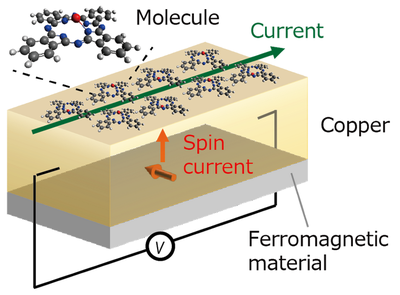PRESS RELEASE
- Research
- 2019
Realization of Spin-dependent Functionality by Covering a Metal Surface with a Single Layer of Molecules
Authors
Abstract
An interface of molecule and metal has attracted much attention in the research field of nanoelectronics because of their high degree of design freedom. Here, we demonstrate an efficient spin-to-charge current conversion at the metal surface covered by a single layer of molecules. Spin currents are injected into an interface between metal (Cu) and lead(II) phthalocyanine by means of the spin pumping method. An observed voltage signal is caused by the inverse Edelstein effect, i.e., spin-to-charge current conversion at the interface. The conversion coefficient, inverse Edelstein length, is estimated to be 0.40 ± 0.06 nm, comparable with the largest Rashba spin splitting of interfaces with heavy metals. Interestingly, the Edelstein length strongly depends on the thickness of the molecule and takes a maximum value when a single layer of molecules is formed on the Cu surface. Comparative analysis between scanning probe microscopy and first-principles calculations reveal that the formation of interface state with Rashba spin splitting causes the inverse Edelstein effect, whose magnitude is sensitive to the adsorption configuration of the molecules.

Nano Letters: https://pubs.acs.org/doi/abs/10.1021/acs.nanolett.9b02619
The University of Tokyo: https://www.u-tokyo.ac.jp/focus/en/press/z0508_00069.html

